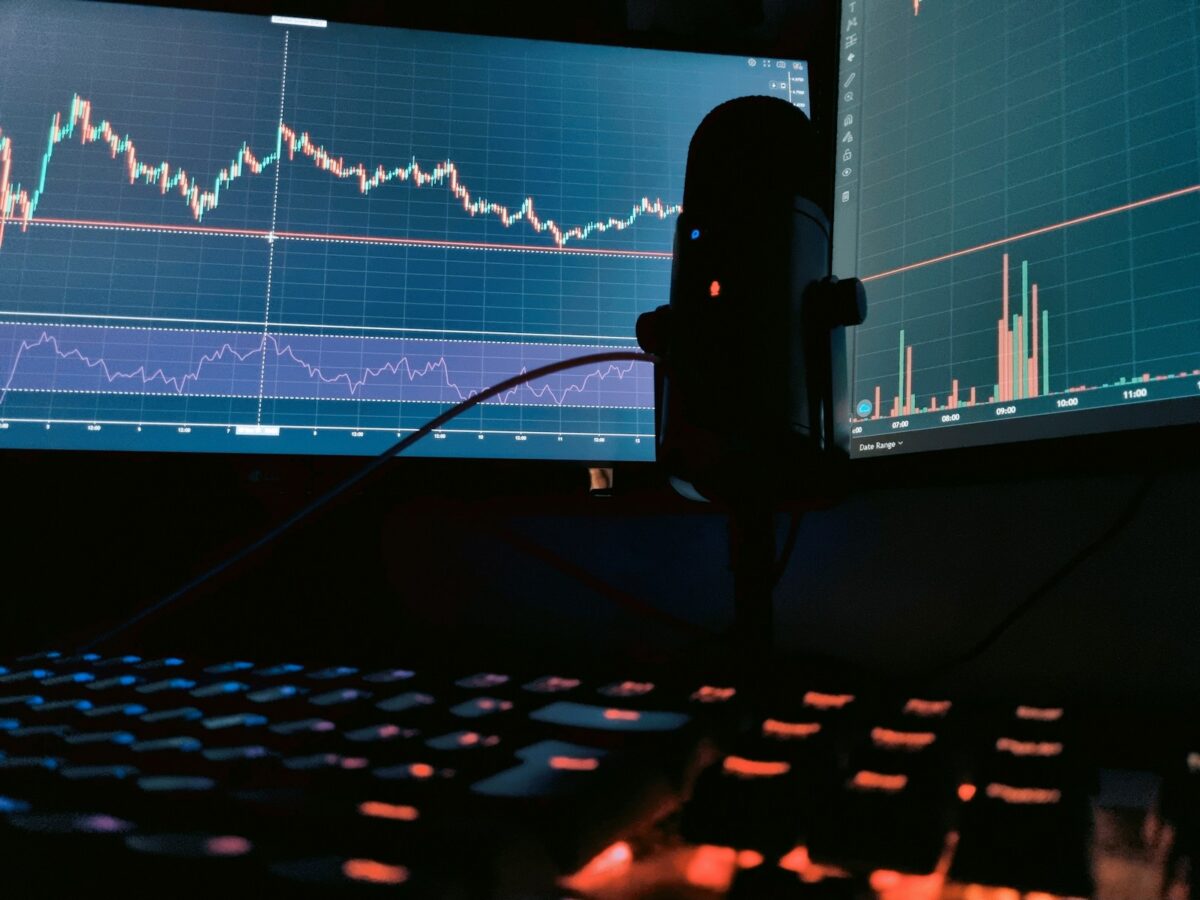
Avoiding pump and dump

Immediate recognition of unusual price and volume patterns is critical for protection against schemes designed to artificially inflate asset values before a rapid decline occurs. A sudden spike in trading volume accompanied by a sharp increase in price often signals attempts to manipulate market perception. Identifying these anomalies early allows investors and regulators to intervene effectively.
Analyzing historical data helps distinguish genuine demand surges from orchestrated manipulation. By comparing recent activity against baseline metrics, one can detect irregularities such as disproportionate volume spikes or price movements that lack fundamental support. This analytical approach strengthens safeguards against deceptive trading tactics.
Implementing automated alerts based on predefined thresholds for price and volume changes enhances real-time detection capabilities. These tools can flag potential artificial inflation events, triggering further investigation before significant losses occur due to abrupt reversals. Such protective mechanisms are indispensable in maintaining market integrity.
Educating participants about common characteristics of fraudulent schemes empowers them to recognize warning signs independently. Awareness of how rapid escalation followed by precipitous drops operates enables proactive decision-making, reducing vulnerability to exploitation through manipulative campaigns.
Mitigating Risks in Cryptocurrency Trading: Recognizing and Preventing Market Manipulation
Effective protection against market manipulation requires precise recognition of unusual volume surges and artificial price spikes. Analyzing transaction data with a focus on volume patterns allows traders to identify suspicious activity that often precedes rapid inflation followed by steep declines. Such schemes exploit low-liquidity assets, generating temporary enthusiasm through coordinated buying, which inflates prices beyond intrinsic value.
Technical safeguards involve monitoring order book dynamics for irregularities, such as sudden large buy orders concentrated within narrow timeframes. These can create an illusion of demand, triggering automated trading algorithms or attracting uninformed participants. Recognizing these signals early prevents exposure to abrupt value corrections caused by orchestrated sell-offs after the initial price elevation.
Understanding Volume Spikes as Early Indicators
Volume analysis serves as a critical tool for distinguishing genuine interest from manipulation-driven activity. A disproportionate increase in trade volume accompanied by sharp price movement without fundamental news often reflects artificial interference. For example, during historical case studies of manipulated tokens, volume spikes were consistently precursors to rapid losses once orchestrators exited positions.
Implementing algorithmic filters that flag abnormal deviations in normalized volume metrics aids in real-time detection. This systematic approach enhances trader awareness and enables strategic exit points before value erosion occurs. Additionally, cross-referencing social sentiment metrics with on-chain data provides deeper insight into whether market enthusiasm is organic or engineered.
Technical Strategies for Market Manipulation Protection
- Diversification: Spreading investments across multiple assets reduces vulnerability to isolated manipulation events.
- Liquidity Assessment: Prioritize assets with substantial daily volumes to minimize impact from artificial price movements.
- Use of Limit Orders: Avoid market orders during volatile periods; limit orders help control entry and exit prices amid erratic fluctuations.
- On-Chain Analysis Tools: Employ platforms that track large wallet activities and token distribution changes signaling potential pump-like behavior.
A well-rounded defense integrates these technical strategies with continuous education about emerging manipulation tactics and regulatory developments affecting transparency standards.
The Role of Community Recognition and Transparency
Community vigilance enhances collective protection by quickly disseminating alerts on suspicious schemes. Platforms incorporating decentralized governance models often feature mechanisms that promote transparency around token listings and project fundamentals, reducing susceptibility to artificial hype cycles. Encouraging open-source audits and third-party verifications fortifies trustworthiness assessments crucial for informed decision-making.
The integration of these factors forms a robust framework providing traders with actionable insights beyond surface-level price movements, enabling safer participation within volatile markets prone to cyclical manipulative episodes.
Identifying Suspicious Volume Spikes
Protection against artificial volume inflations requires meticulous analysis of trading data patterns. A sudden spike in transaction volume without corresponding fundamental news often signals manipulative schemes designed to distort price perception. Recognizing these anomalies early is crucial for safeguarding investments and maintaining market integrity.
Volume surges induced by coordinated activities typically precede rapid price appreciation followed by an abrupt downturn, characteristic of manipulation cycles aiming to capitalize on unsuspecting participants. Differentiating organic market interest from engineered volume is essential for accurate risk assessment and strategic decision-making.
Technical Indicators for Volume Anomaly Recognition
One effective method involves comparing current volume against historical averages using statistical thresholds such as standard deviation bands. For example, a volume increase exceeding three standard deviations above the mean suggests abnormal activity warranting further scrutiny. Additionally, cross-referencing volume spikes with order book depth and bid-ask spreads can reveal inconsistencies indicative of artificial inflows.
Time-series analysis tools like moving average convergence divergence (MACD) applied to volume data also assist in detecting unusual momentum shifts. Instances where volume accelerates sharply but price movement remains muted may indicate wash trading or layering tactics employed in deceptive schemes.
- Case Study: In mid-2021, a low-cap altcoin exhibited a tenfold daily volume surge unaccompanied by news releases, which was soon followed by a steep price collapse, revealing coordinated manipulation efforts.
- Example: Analysis of blockchain transaction timestamps showed clustering of trades within seconds, a hallmark of automated bot-driven artificial volume generation.
The interplay between on-chain data and exchange-traded volumes enables comprehensive evaluation. Monitoring wallet activity linked to suspicious entities can uncover repetitive large transfers timed precisely with volume spikes, suggesting orchestrated injections aimed at triggering temporary demand illusions.
Developing protection strategies includes deploying algorithmic filters that flag abrupt divergences between price trends and corresponding trade volumes. Integrating machine learning models trained on labeled datasets of known manipulation cases enhances recognition accuracy and provides real-time alerts to investors and compliance teams.
Verifying project fundamentals quickly
To identify the authenticity of a cryptocurrency project and protect investments from artificial price inflations, begin by analyzing trading volume patterns. A sudden spike in volume without corresponding updates or product milestones often signals manipulative schemes aiming for rapid recognition rather than organic growth. Cross-reference volume surges with on-chain activity metrics such as wallet interactions and token transfers to detect if increased demand is genuine or artificially generated through wash trading.
Next, assess the project’s technical foundation by reviewing its smart contract code and audit reports. Transparent and thoroughly audited contracts provide safeguards against malicious functionality designed to facilitate abrupt price collapses. Look for built-in mechanisms like liquidity locking or vesting schedules that offer protection from precipitous sell-offs, which are common triggers for sharp downward trends following orchestrated market pumps.
Methodical checks for detecting manipulative price movements
Employ time-series analysis of the asset’s price relative to external events to distinguish organic interest from coordinated manipulation. For example, compare the timing of media mentions or social media hype spikes with actual transaction data. If the price surge precedes public announcements or community engagement significantly, it may indicate pre-arranged schemes designed to attract unwitting investors before an inevitable value dump.
Utilize decentralized finance (DeFi) analytics tools that track whale wallets and large-scale transfers between exchanges and private holdings. A pattern of tokens moving into exchange addresses followed by rapid increases in sell orders often forecasts imminent market corrections engineered by insiders. Incorporating these techniques within a swift evaluation framework empowers investors to differentiate sustainable projects from those prone to volatile artificial inflation tactics.
Using Trusted Sources for Alerts
Relying on verified and trusted sources for market alerts is fundamental to recognizing artificial volume spikes that often precede manipulative trading schemes. Sudden price surges accompanied by unusually high transaction volume can indicate orchestrated attempts to inflate asset value temporarily. By monitoring alerts from reputable analytics platforms, investors gain early warning signals that differentiate organic market movements from engineered ones.
Volume anomalies serve as key indicators in detecting coordinated actions designed to influence prices unfairly. Trusted sources employ advanced algorithms analyzing trade patterns, order book depth, and network activity to flag suspicious behavior. This technical scrutiny enhances protection against falling victim to these schemes by providing data-driven insights, enabling timely evaluation rather than reactionary decisions based on hype or unverified rumors.
Recognizing Artificial Volume Spikes Through Data-Driven Alerts
Comprehensive alert systems integrate multiple metrics such as liquidity inflows, exchange-specific volumes, and wallet clustering to identify sudden abnormal activity. For example, an abrupt surge in volume without corresponding fundamental news often suggests manipulative intent. Platforms like Santiment and Glassnode incorporate on-chain data with social sentiment analysis to generate reliable notifications about potential price distortions.
These alerts assist traders in discerning genuine interest from engineered volatility. When a significant volume spike occurs simultaneously with rapid price escalation but lacks supporting on-chain evidence of increased adoption or usage, it raises suspicion of transient schemes aimed at quick profit extraction. Recognizing these patterns early allows for protective measures such as adjusting position sizes or avoiding entry during unstable conditions.
- Cross-verification: Comparing alerts across multiple trusted services reduces false positives.
- Historical pattern recognition: Evaluating past incidents helps contextualize current spikes.
- Integration of blockchain analytics: Combining transaction tracing with market data reveals authenticity levels behind volume changes.
The reliability of alert sources depends heavily on the transparency and sophistication of their methodologies. Open access to algorithmic criteria and real-time data feeds improves confidence in the alerts received. Moreover, community feedback loops within these platforms enhance detection accuracy by crowdsourcing anomaly reports that complement automated systems.
Ultimately, cultivating a disciplined approach grounded in trusted alerts empowers participants to navigate volatile environments more effectively. Emphasizing technical validation over speculative impulses fosters resilience against disruptive practices targeting vulnerable markets. Experimental engagement with these tools also encourages deeper understanding of underlying blockchain dynamics influencing price and volume relationships, promoting sustained knowledge growth alongside financial protection.
Conclusion: Strategic Use of Stop-Loss to Mitigate Risks from Artificial Price Spikes
Setting a well-calibrated stop-loss order acts as a pivotal mechanism for protection against abrupt price fluctuations caused by artificial volume surges and manipulative schemes. Recognizing abnormal spikes in trading volume–often preceding coordinated asset inflation followed by sharp declines–enables traders to define precise exit points that cap potential losses before the downward cascade intensifies.
Technical analysis demonstrates that sudden unnatural increases in volume typically signal orchestrated attempts to inflate prices temporarily, followed by rapid sell-offs. Implementing stop-losses aligned with these volumetric anomalies allows market participants to maintain disciplined risk management amid erratic moves driven by engineered hype rather than organic demand.
Key Technical Insights and Forward-Looking Implications
- Volume Recognition: Employ real-time analytics tools to detect disproportionate volume spikes unaccompanied by fundamental catalysts, identifying probable manipulative activity early enough to set protective thresholds.
- Dynamic Stop-Loss Placement: Adapt stop-loss levels based on volatility measures tied to price velocity during suspicious surges, avoiding premature exits while minimizing exposure once reversal patterns emerge.
- Integration with On-Chain Metrics: Combine volume data with blockchain indicators such as wallet clustering and token distribution shifts to differentiate genuine momentum from synthetic inflation schemes.
- Automation and AI Models: Leverage machine learning algorithms trained on historical manipulation events to refine stop-loss triggers dynamically, enhancing responsiveness without emotional bias.
The persistent evolution of market manipulation techniques demands continuous refinement of protective strategies. As decentralized finance protocols mature, embedding adaptive stop-loss mechanisms within smart contracts could offer automated safeguards tailored to asset-specific behavioral patterns. These innovations would empower traders not only to limit downside risks but also contribute valuable data points for community-driven detection of artificial price distortions.
Encouraging experimental application of layered analytical approaches combining volume recognition, price action studies, and behavioral modeling will deepen understanding of transient market phenomena induced by orchestrated promotional tactics. Such rigorous inquiry fosters resilience in trading methodologies and promotes healthier ecosystem integrity against recurrent cyclical exploitations.


